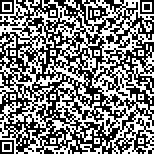下载中心
优秀审稿专家
优秀论文
相关链接
摘要

不确定性分析是遥感产品真实性检验最重要的部分,本文以叶面积指数LAI为例,从测量、模型以及蕴含在测量和模型中的尺度效应3个方面分析产品真实性检验过程的不确定性来源,并针对问题提出减小其不确定性的办法。对于相对均一的地表,地面测量的空间代表性比较好,可不考虑地表空间代表性引起的尺度效应和蕴含在模型中的尺度效应引起的不确定性。针对异质性地表,分为两种情况:若模型是线性的,蕴含在模型中的尺度效应可以忽略,只需要考虑测量的不确定性、模型本身的不确定性、以及地面测量的空间代表性引起的尺度效应;若模型是非线性的,则测量、模型和蕴含在测量和模型中的尺度效应引起的不确定性都需要考虑。
Uncertainties in validation cause errors in the validation of remote sensing products. Therefore, these uncertainties must be minimized to increase the accuracy of remote sensing validation. This study aims to summarize and analyze three main uncertainty sources in the remote sensing validation of Leaf Area Index (LAI). The three sources are ground-based measurement uncertainty, validation model uncertainty, and scale effects. This study also proposes a method to minimize each uncertainty.
Field measurement and satellite observation errors can minimize the effect of LAI measurement errors. The uncertainties in the sampling, field measurement, and LAI model are minimized to measure LAI and obtain LAI map.
The scale mismatch errors among ground-based LAI, fine-scale LAI map, and coarse-scale LAI map are primarily estimated by three methods to reduce the uncertainties. The Taylor expansion of the transfer function as one of the three methods is emphasized to compute the scale bias, which is a function of intra-pixel spatial heterogeneity and the degree of transfer function non-linearity. The coarse-scale LAI reference map, which can be compared with LAI remote sensing products, is obtained from fine-scale LAI aggregation after minimizing the uncertainties.
An obvious scale mismatch can be observed between the ground-based LAI and coarse-scale remote sensing LAI in the case of land surface heterogeneity. A fine-scale LAI map should be used as a bridge between the ground-based LAI and coarse-scale remote sensing LAI. The error information in field measurement and satellite observation can be used to derive the site-specific relationship and reduce the uncertainties in the fine-scale LAI reference map. The scaling bias caused by the nonlinearity of the Normalized Difference Vegetation Index (NDVI) compensates for the scaling bias between LAI and NDVI. This bias can be corrected through Taylor expansion.
The uncertainties in the validation of LAI remote sensing products are significant. The three main uncertainties, namely, ground-based measurement uncertainty, validation model uncertainty, and scale effects, can be minimized to show a rigorous and reliable validation of LAI remote sensing products. For relatively homogeneous land surfaces, the ground-based measurements are enough to represent the sample plot, and the scale effects of the measurements and the model can be ignored. For heterogeneous land surfaces, the scale effects can be ignored if the model is linear. However, the uncertainties caused by the spatial representation for model and ground measurements should be considered. All three types of uncertainties should be considered if the model is non-linear.

